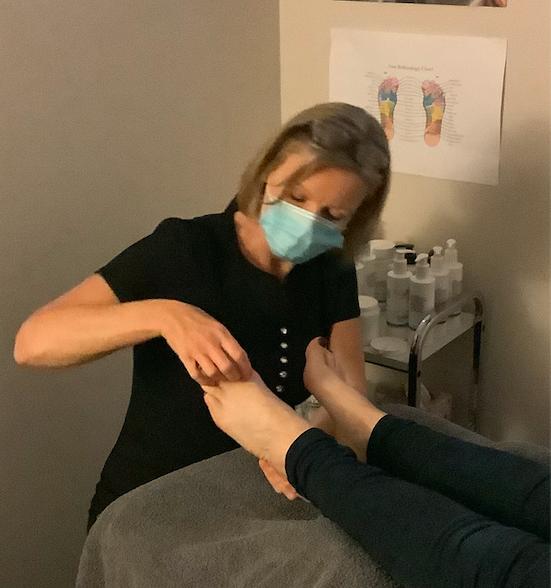
3 minute read
Reflexology with Sylvia Smith
Reflexology is believed to have originated in China around five thousand years ago, when the Chinese people prac:ced a form of pressure therapy linked to the acupressure points in the body. The Chinese also discovered that the whole body can be treated through the feet. It wasn’t only the Chinese however, the ancient Egyp:ans also prac:ced a form of Reflexology da:ng back to 2,300 BC. The therapy was only introduced into Europe in the 16th Century and became popular in the 1930s when zone therapy was introduced as a concept by Eunice Ingham, a physiotherapist who prac:ced the therapy on her students, with remarkable results.
Reflexology is a form of specific massage on both feet and hands, although foot reflexology is by far the most popular. However, hand reflexology can be equally effecEve and can be pracEced on amputees and on those who have painful issues with their feet. When illness or disease happens within the body, it is believed that the body’s natural energy flow is impinged or blocked. Reflexologists regard the feet as a mirror of the body, with the right foot represenEng the right side and the lel foot represenEng the lel side, with all of the body’s systems and organs mapped out on the feet. By applying reflexology techniques to the associated reflex points, the reflexologist can detect tender or congested points and can manipulate these areas in order to allow the energy flow within the body to be restored to its opEmum, thereby allowing the body to maximise its capacity to heal itself and prevent illness.
Advertisement
Reflexology is a preventaEve treatment rather than a cure for exisEng condiEons, although many have noted an improvement in their condiEon aler just a few reflexology treatments.
Most reflexology clients of Shiling Stones find the treatment to be deeply relaxing and wholly beneficial to their overall wellbeing, with many commenEng on how well they feel for days post treatment. Having a holisEc treatment such as reflexology also channels the mind into the pracEce of looking aler yourself beSer, perhaps through improved diet and exercise, thus creaEng the knock-on advantage of increasing your overall health and wellbeing. And once you start to feel beSer, you become more aSuned to conEnuing down that path.
Sylvia Smith of Shiling Stones studied a course in Reflexology with the School of Natural Health Sciences, gaining a Grade A pass with DisEncEon, and is currently studying the Advanced Reflexology course with the same insEtuEon. When asked how she feels about pracEcing reflexology, she said “each treatment is different, I never know what I’m going to find when I start massaging a client’s feet, even those who I have treated before. The human body is very complex and many things can knock it off balance, so I find it fascinaEng to find these imbalances just by massaging the feet! The course itself was preSy intense, and I had a number of case studies to complete before I was awarded my diploma, although I actually did more case study treatments than prescribed by the course because I wanted to have as much exposure as possible prior to adding the treatment to my list of therapies on offer.”.
Shiling Stones offers a range of therapies, including massage with or without hot stones, facials, Hopi ear candling, Indian face massage, NutriEon consultaEons and of course Reflexology. Shiling Stones can be found at the Old School in Maryculter. See their website for treatment descripEons www.shiaingstones.com where you can get in touch to book your appointment, and follow them on Facebook where you can book your appointment direct.












